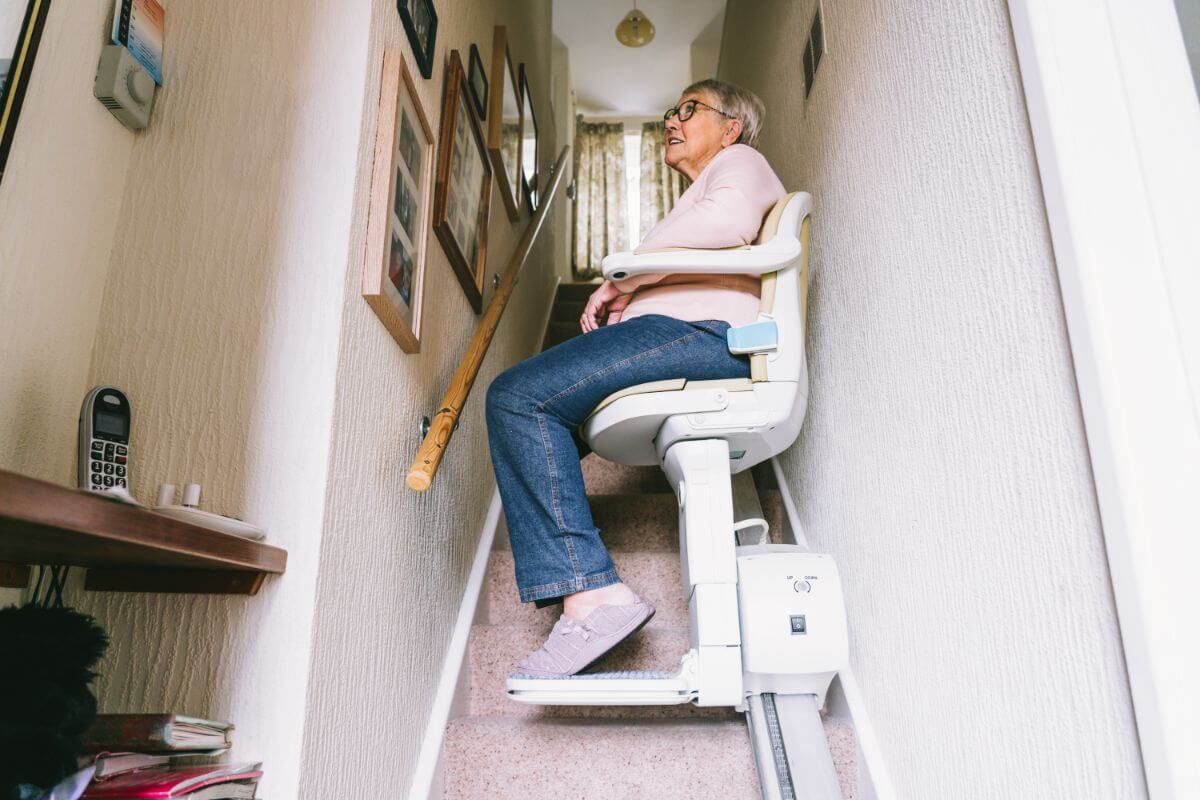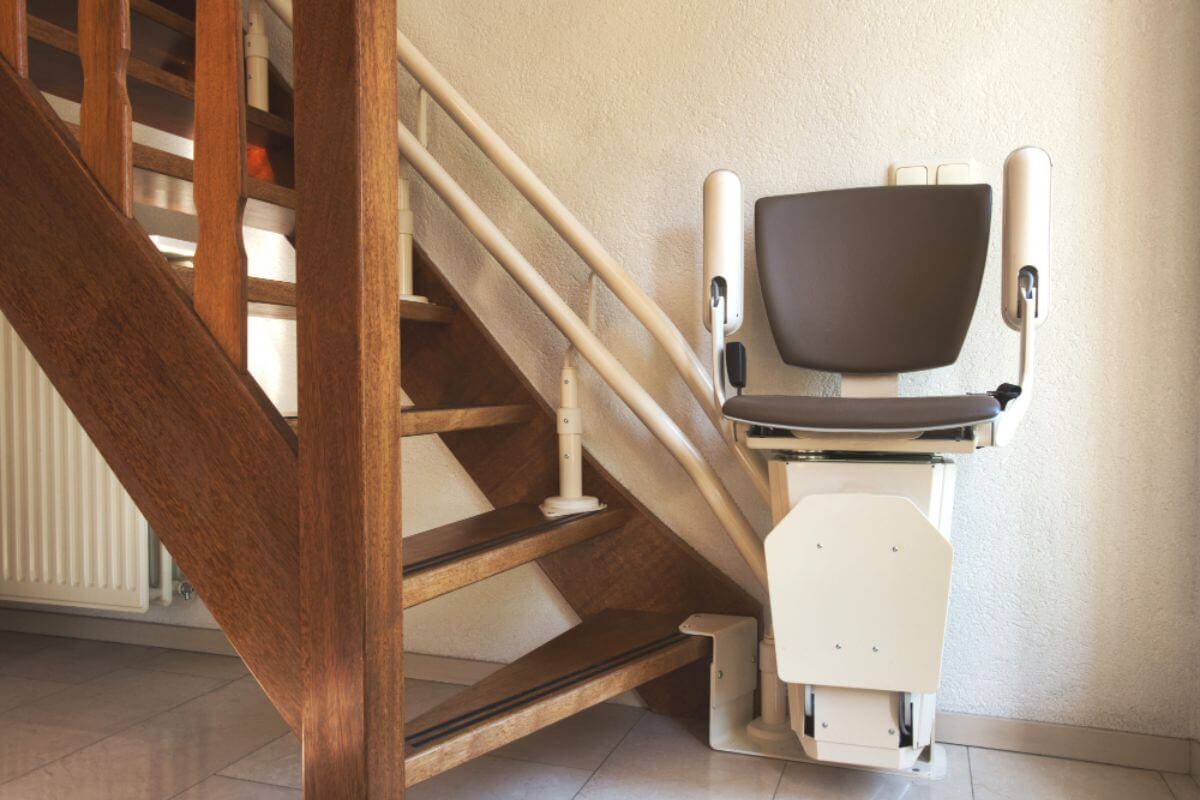17 Reasons Why Walking Is the Best Exercise

Walking’s popularity as a way to stay fit is skyrocketing. Stepping outside and taking a stroll even for just half an hour burns calories, improves cardiovascular health, and also gives your mind a bit of an escape from the everyday stresses of life.
The activity of walking is now being called the new exercise, which has taken hold due to all of the great health and social benefits it offers. Walking also happens to be a wonder drug for every aging process — and it may be the best exercise for older adults in particular.
You can think of walking as the perfect workout since it’s low impact, doesn’t require a lot of equipment and space, and can uplift your mood – and that’s why we need to walk more often.
Let’s take a look at the many benefits of walking.
Physical Benefits of Walking
- Walking helps you burn calories and maintain a healthy weight.
- Walking increases your stamina and energy.
- Walking enhances joint flexibility.
- Walking improves heart health.
- Walking can reduce your risk of developing chronic diseases.
- Walking can help you live longer.
According to research, regular walking can reduce fat and enhance your body’s reaction to insulin.
Walking helps you burn calories since it makes you sweat. Therefore, it helps you can maintain a healthy weight without the need to engage in intense exercise.
Our breathing and heart rate increase as we engage in exercise such as walking. As a result, our blood sugar or glucose reserves are reduced because our hearts are using up more of it. The more regularly you walk, the more you can ensure your blood sugar stays at a healthy level.
Need to increase your calorie burn? Plan a route that incorporates hills when you go for a walk outside, alternate between speed walking and a slower pace, and set a goal for yourself to walk the same routes on different days to see if you can do them faster each time.
A study has found that active older adults (defined by having steps/day above the median value of 4,227 steps/day) had reduced blood pressure and blood sugar.
Most people become lethargic when they lead a sedentary lifestyle. It is possible to regain your stamina by walking regularly, which will gradually increase your energy level.
This is similar to improving stamina. Usually getting started and making walking a habit is the hardest part, but once you do, walking can help you significantly alleviate sore and stiff joints.
Contrary to popular belief, walking can help increase your range of motion and mobility since it strengthens the muscles around your joints and promotes blood flow to tense areas.
Studies show that walking for at least 10 minutes each day, or for roughly an hour each week can help older adults avoid incapacity and arthritic pain. A 2019 study published in the American Journal of Preventive Medicine monitored 1,564 persons with lower-body joint pain who were older than 49. Four years later, participants who walked for one hour every week were more likely to still be free of disabilities. Another study discovered that walking was a cost-effective, practical, and secure form of exercise for people with arthritis of all fitness levels.
Everybody wants to take good care of their hearts and do their best to prevent heart attacks. You can accomplish this by doing regular walking. People who walk frequently may be at a lower risk for vascular stiffness, inflammation, obesity, diabetes, high blood pressure, and cholesterol. A healthier heart can be attributed to the majority of these variables.
Walking is recommended by the American Diabetes Association as a way to lower blood sugar levels and your overall risk of developing diabetes. According to some studies, your systolic blood pressure may drop by 0.45 points for every 1,000 daily steps you take. In other words, if you walk 10,000 steps per day, your systolic blood pressure will probably be 2.25 points lower than someone who only walks 5,000 steps per day.
According to The New England Journal of Medicine, those who walked enough to satisfy recommended levels of physical activity had a 30% lower risk of cardiovascular events (such as a heart attack or stroke) than those who did not walk enough.
Longer walks are essential for illness prevention. Doctors advise taking a stroll for an hour at least once or twice every week.
A longer life is possibly the greatest benefit out of all these. According to a 2020 research published by the American Heart Association, older adults (average age: 69) who walked for 150 minutes per week (or 30 minutes per day, five days per week) were 67% less likely to die from any cause than those who were less active. A 20% decreased chance of dying from any cause was linked to every single incidence of 30-minute mild exercise (such as walking). More than 1,200 people were included in this study.
Another study that was published in The American Journal of Clinical Nutrition came to the same conclusion – that walking for 20 minutes a day can reduce your chance of dying by up to 30%. The largest health benefits came from starting a daily walking routine for inactive people. The study’s authors concluded that efforts to encourage even small increases in activity in sedentary adults are helpful to public health.
- Walking can keep back varicose veins.
- Walking helps improve coordination and balance.
- Walking can help you sleep better.
Varicose veins are more likely to develop as you age. Dr. Luis Navarro, the founder and director of The Vein Treatment Center in New York City, claims that walking is a tried-and-true method to stop them from forming.
According to him, we all have a ‘second heart’, which is a venous system made up of the muscles, veins, and valves in our calf and foot. Walking helps to maintain and develop the leg muscles in this system, thus helping increase the healthy blood flow and pump blood back up to the heart and lungs.
Everyday walking also helps reduce the swelling and restlessness caused by varicose veins in people who already have them. Additionally, a regular walking routine can help postpone the beginning of varicose veins, especially if you are genetically susceptible to developing varicose and/or spider veins.
Usually, as people age, their sense of balance gets worse. It can be further hampered by a variety of illnesses and medications, untreated eye issues, a lack of suppleness, and more. Bad balance frequently results in falls, which can result in head traumas and other permanently crippling injuries. Hip fractures in particular can seriously compromise one’s health and jeopardize independence. A combination of exercises including walking, weight training, and targeted workouts can enhance balance and reduce the risk of falling, especially for older adults.
Walking helps develop lower-body strength, which is necessary for proper balance. For most people, walking is a safe kind of exercise that helps you reach your aerobic activity objectives while enhancing your balance.
Regular exercise improves our ability to sleep at night. That’s because physical activities boost melatonin, the sleep hormone.
According to a 2019 study, postmenopausal women who engage in modest to moderate physical activity sleep better at night than those who have sedentary lifestyles. Another recent study discovered that healthy adults who walked every day significantly improved their sleep duration and quality. Walking also helps in lowering discomfort and tension, both of which can interfere with sleep.
Social Benefits of Walking
- Walking expands your social circle.
- Walking is one of the cheapest forms of exercise.
- Walking can be a way for you to have regular social activity.
Walking enhances opportunities for face-to-face social interaction and aids in developing a social map of one’s neighborhood. Direct contact makes it simpler to develop the attributes essential to social connection: sympathy, trust, respect, understanding, loyalty, and cooperation. Despite alternative means of communication, in-person interaction is still the best way for creating and maintaining our connections.
Even a person on a tight budget can easily start and maintain a routine walking activity. It merely requires a pair of reliable walking shoes and you’re good to go. Walking is free, after all. And since you aren’t driving and increasing your carbon footprint, it’s also healthy for the environment.
Nothing beats going for a walk with a friend to catch up, unwind, and get the exercise your body needs. As it turns out, making your walk a social event could be one of the most effective methods to up your step count..
Social Benefits of Walking
- Walking helps improve your mood.
- Walking boosts brain health.
- Walking gets your creative juices flowing.
- Walking leads to less anxiety and depression.
- Walking boosts self-confidence and helps you achieve more health goals.
Going for a stroll is a zero-calorie technique that gives the same benefit mood-lifting benefit as drinking a glass of wine or eating a square (or three) of dark chocolate to soften the edge of a difficult day.
Research shows that even 10 minutes of walking might make you feel better. Walking during the COVID-19 pandemic was proven to dramatically boost mood, according to another recent study. Additionally, the impact can be increased even further if you take a stroll through some lush greenery.
Regular walking, mainly when done among the greenery or while enjoying some sunlight, “really alters your neurological system to such an extent that you’ll perceive a drop in rage and animosity.” This can be especially beneficial in the winter when seasonal depression is more prevalent.
Additionally, socializing your walks—stretching with, for example, your partner, a neighbor, or a close friend—can make you feel better since the interaction strengthens your sense of connection.
This area of study is expanding swiftly. One study found that persons who walked briskly for an hour, three times per week, had more effective decision-making regions in their brains than those who attended educational seminars. According to another research, physical activities like walking can help elderly women’s brain health. Walking also helps improve cognition and memory. Experts attribute these benefits to the fact that doing regular exercise helps increase blood flow to the brain.
In search of ideas for your next passion project? Consider going for a stroll to clear your head. Walking increases creativity according to many studies. A 2020 article published in Scientific Reports concluded that physical activity, good mood, and creativity were all “related to one other.”
In less-scientific terms, this implies that the more individuals moved around each day, the more creative and happy they reported feeling.
Another study that was published in the Journal of Experimental Psychology: Learning, Memory, and Cognition found that people’s creative thinking is enhanced both during and immediately after walking. It doesn’t matter if you’re outside or on a treadmill, as long as you’re walking,
Walking, according to the Anxiety and Depression Association of America (ADAA), may improve memory, focus, and alertness while reducing fatigue and stress. A senior can start feeling less anxious after just five minutes of walking.
Furthermore, according to the ADAA, cardiovascular exercise like walking can enhance one’s mood, sleep, and sense of self-worth.
Older adults often feel like their independence has been taken from them as they begin getting older. By regaining the freedom to travel by walking, you will have more confidence in yourself.
Once you start walking frequently, you will have developed a habit, and when you have a routine, you are more likely to stick with exercise and adopt new healthy behaviors. Our bodies are not made to sit around all day. Any form of movement is preferable to inactivity, but finding a form of activity that is appropriate for your age and level of fitness is crucial if you want to feel empowered and motivated to continue.
Furthermore, walking can help you believe in yourself and achieve your health goals. According to a recent study, among the estimated 5,000 persons surveyed, those who walked frequently reported feeling better about their physical and mental health.
How to Make a Solid Walking Routine
It might seem like a burden to provide assistance to your aging parents, but remember that it is a privilege that not everyone has the chance to enjoy.
First and foremost, it is always a great idea to consult your physician before starting any new physical activity. Get the advice and input of your doctor to be on the safe side.
If you do not exercise regularly, start at the beginning. If you normally use a mobility aid such as a walker or a cane, make sure to continue doing so. If you require extra help in keeping your balance, don’t hesitate to use grab bars, safety poles, or handrails in your walking routine. As you get stronger and feel more at ease, gradually add extra minutes to your walks.
If you already work out regularly, begin with a walking program that best fits your present schedule and work your way up from there. If the strategy seems overly simple, increase the duration, and distance, or add hills to your routine. Aim for at least 150 minutes of walking per week, but feel free to increase that amount.
Conclusion
Walking is a great way to get your body moving. Not only is it relatively low impact, but it’s fun, and you can do it pretty much anywhere. It also helps with a lot of things, including your breathing and blood pressure, your weight, your brainpower—the list goes on.
There is nothing like getting a good walk to give your body the exercise it needs, and to enjoy nature at the same time. It is a great activity that you can do on your own or with friends, even if you are short on time. The longer walks can be used for meditative purposes as well, where you just focus on your breathing and slow your heart rate down. Walking is also beneficial to our mental health since it calms us down, making us more relaxed and happier.
So if you’re not already getting regular exercise, consider walking more often. You might find that it’s one of the more enjoyable ways to get the necessary physical activity you need.
Let’s get up, lace up those walking shoes, and get out there!
With accessibility solutions in your home, Home2stay makes walking, exercising, and going about your daily routine safer. Make safety a top priority for yourself and your loved ones!






Leave a Comment
We'd Love to Hear Your Thoughts Got something to say? We're all ears! Leave your comments below and let us know what you think. Your feedback helps us improve and serve you better. Can't wait to hear from you!